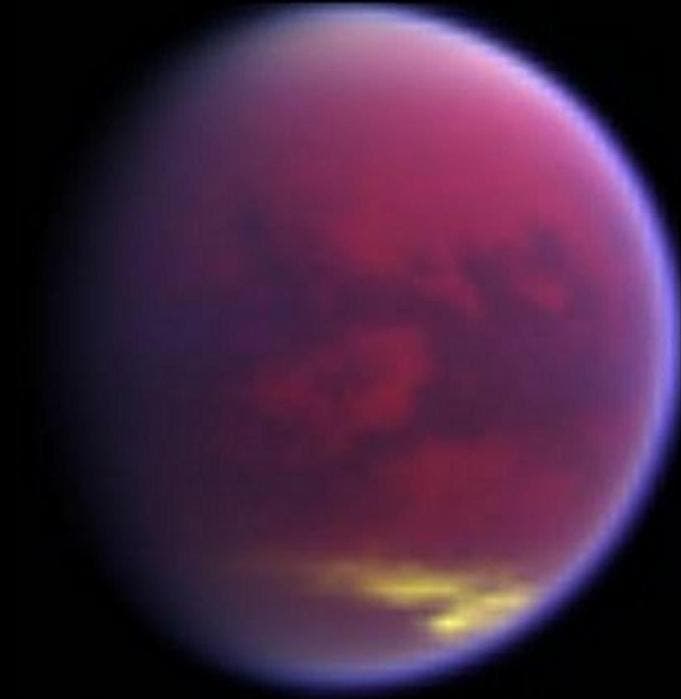NASA’s Cassini spacecraft has detected propylene, a chemical used greatly in everyday life, in things like food-storage containers, car bumpers and other consumer products, on Saturn’s Moon Titan. I really recommend watching the video below, as it explains the situation in great detail:
A small amount of propylene was identified in Titan’s lower atmosphere by Cassini’s Composite Infrared Spectrometer (CIRS); the device measures infrared emissions given away by Saturn and Saturn’s moons in a similar way to the way our hands feel a fire’s warmth. Every gas has a unique thermal fingerprint, and based on that, CIRS can identify pretty much every gas. The only problem is isolating the signal from other, interfering signals.
“This measurement was very difficult to make because propylene’s weak signature is crowded by related chemicals with much stronger signals,” said Michael Flasar, Goddard scientist and principal investigator for CIRS. “This success boosts our confidence that we will find still more chemicals long hidden in Titan’s atmosphere.”
This detection brings a valuable piece of the puzzle, a piece which was sought after since the Voyager 1 spacecraft and the first-ever close flyby of this moon in 1980. Voyager identified many of the gases in Titan’s hazy brownish atmosphere as hydrocarbons, a class of organic chemical compounds composed only of the elements carbon (C) and hydrogen (H) which compose most of the petroleum and natural gas.

In Titan’s atmosphere, hydrocarbons form after sunlight breaks apart methane, the second-most plentiful gas in that atmosphere. The new fragments can bond together, forming chains of 2, 3, or even more carbons – ethane and propane for example, can be created this way.
As Cassini continued to discover more and more hydrocarbons on Titan, propylene remained elusive until the CIRS analysis.
“I am always excited when scientists discover a molecule that has never been observed before in an atmosphere,” said Scott Edgington, Cassini’s deputy project scientist at NASA’s Jet Propulsion Laboratory (JPL) in Pasadena, Calif. “This new piece of the puzzle will provide an additional test of how well we understand the chemical zoo that makes up Titan’s atmosphere.”
For more information on the Cassini mission, visit NASA’s page.
Via NASA.
Was this helpful?



